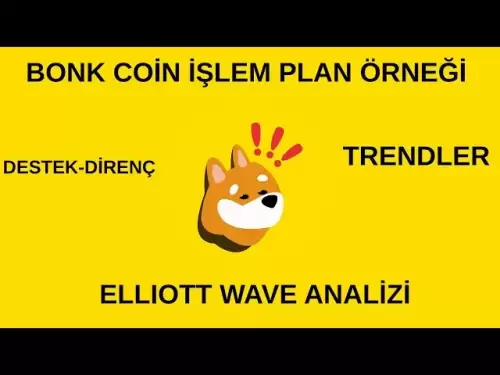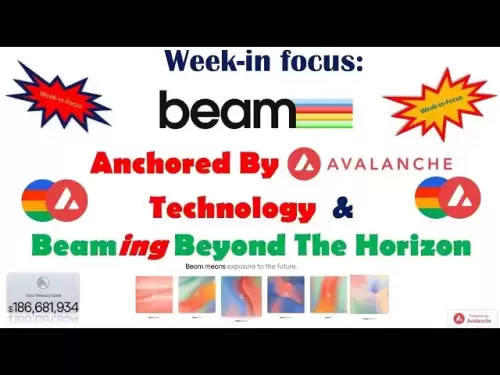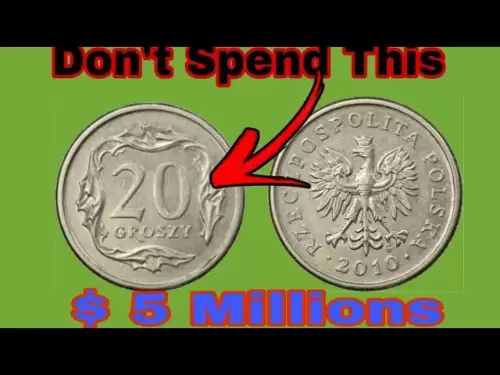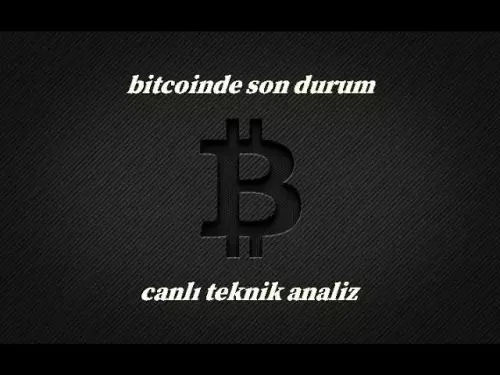-
 Bitcoin
Bitcoin $108,562.4295
0.46% -
 Ethereum
Ethereum $2,533.9553
1.52% -
 Tether USDt
Tether USDt $1.0002
-0.01% -
 XRP
XRP $2.2542
2.23% -
 BNB
BNB $662.4567
1.48% -
 Solana
Solana $151.4114
3.48% -
 USDC
USDC $0.9999
0.00% -
 TRON
TRON $0.2860
0.91% -
 Dogecoin
Dogecoin $0.1685
3.72% -
 Cardano
Cardano $0.5809
1.63% -
 Hyperliquid
Hyperliquid $39.2916
1.85% -
 Sui
Sui $2.8874
0.85% -
 Bitcoin Cash
Bitcoin Cash $496.5801
2.72% -
 Chainlink
Chainlink $13.3582
2.48% -
 UNUS SED LEO
UNUS SED LEO $9.0279
0.07% -
 Avalanche
Avalanche $18.0773
2.30% -
 Stellar
Stellar $0.2426
3.05% -
 Toncoin
Toncoin $2.9086
6.01% -
 Shiba Inu
Shiba Inu $0.0...01170
2.97% -
 Hedera
Hedera $0.1587
3.47% -
 Litecoin
Litecoin $87.4596
1.13% -
 Monero
Monero $317.0425
0.73% -
 Polkadot
Polkadot $3.3778
1.90% -
 Dai
Dai $0.9999
-0.01% -
 Ethena USDe
Ethena USDe $1.0001
-0.01% -
 Bitget Token
Bitget Token $4.4095
0.63% -
 Uniswap
Uniswap $7.3593
6.80% -
 Pepe
Pepe $0.0...09910
3.64% -
 Aave
Aave $274.7388
2.68% -
 Pi
Pi $0.4607
0.48%
What does KDJ bottom divergence mean? Should I buy after bottom divergence occurs?
KDJ bottom divergence signals a potential bullish reversal when price hits a new low but KDJ forms a higher low; confirm with other indicators before buying.
May 22, 2025 at 07:21 pm
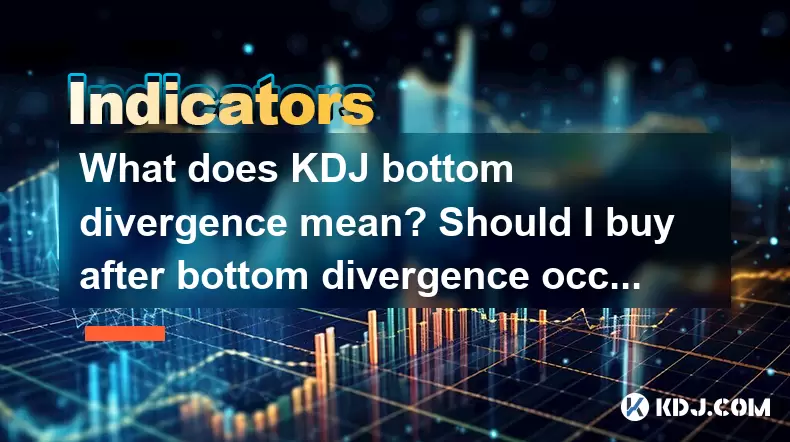
What is KDJ Bottom Divergence?
KDJ, or the Stochastic Oscillator, is a popular technical analysis tool used in the cryptocurrency market to predict price movements. It consists of three lines: K, D, and J, which are calculated based on the price momentum over a specific period. Bottom divergence in the context of KDJ occurs when the price of a cryptocurrency forms a new low, but the KDJ indicator fails to confirm this new low by forming a higher low. This discrepancy between the price action and the KDJ indicator can signal a potential reversal in the market.
Identifying KDJ Bottom Divergence
To identify KDJ bottom divergence, traders need to closely monitor both the price chart and the KDJ indicator. Here are the steps to identify this pattern:
- Observe the Price Chart: Look for a scenario where the price of the cryptocurrency forms a new low. This new low should be lower than the previous low.
- Check the KDJ Indicator: Simultaneously, check the KDJ indicator. If the KDJ forms a higher low compared to the previous low while the price forms a new low, a bottom divergence is present.
- Confirm the Divergence: Ensure that the divergence is clear and not just a minor discrepancy. The more significant the divergence, the stronger the signal.
Should You Buy After KDJ Bottom Divergence Occurs?
The occurrence of KDJ bottom divergence can be a strong signal for traders to consider buying. However, it is crucial to use this signal in conjunction with other technical indicators and market analysis to increase the probability of a successful trade. Here are some considerations:
- Use Additional Indicators: Combine KDJ bottom divergence with other indicators such as the Relative Strength Index (RSI) or Moving Averages to confirm the potential reversal.
- Volume Analysis: Check the trading volume during the divergence. An increase in volume can further validate the signal.
- Market Sentiment: Assess the overall market sentiment and news that could impact the cryptocurrency's price.
Risks and Limitations of Relying on KDJ Bottom Divergence
While KDJ bottom divergence can be a powerful tool, it is not infallible. Traders should be aware of the following risks and limitations:
- False Signals: Like any technical indicator, KDJ can produce false signals. Not every bottom divergence will lead to a bullish reversal.
- Lag: The KDJ indicator can sometimes lag behind the price action, leading to delayed signals.
- Over-reliance: Relying solely on KDJ bottom divergence without considering other factors can lead to poor trading decisions.
How to Implement KDJ Bottom Divergence in Your Trading Strategy
To effectively incorporate KDJ bottom divergence into your trading strategy, follow these steps:
- Select a Trading Platform: Choose a platform that offers advanced charting tools and the ability to plot KDJ indicators.
- Set Up the KDJ Indicator: Add the KDJ indicator to your chart. Most platforms allow you to customize the period settings for the KDJ.
- Monitor for Divergence: Regularly check your charts for instances of bottom divergence. Use alerts if available to notify you of potential signals.
- Confirm with Other Indicators: Once you spot a potential bottom divergence, use other technical indicators to confirm the signal.
- Execute the Trade: If the signal is confirmed, consider entering a long position. Set appropriate stop-loss and take-profit levels to manage risk.
Practical Example of KDJ Bottom Divergence
To illustrate how KDJ bottom divergence works in practice, consider the following hypothetical scenario:
- Price Action: The price of Bitcoin forms a new low at $20,000, lower than the previous low of $22,000.
- KDJ Indicator: At the same time, the KDJ indicator forms a higher low at 20, compared to the previous low of 15.
- Divergence: This discrepancy between the price and the KDJ indicator suggests a bottom divergence.
- Confirmation: The trader checks the RSI, which is also showing bullish divergence, and notices an increase in trading volume.
- Decision: Based on the confirmed signals, the trader decides to enter a long position on Bitcoin, setting a stop-loss at $19,000 and a take-profit at $25,000.
Frequently Asked Questions
Q: Can KDJ bottom divergence be used for all cryptocurrencies?
A: Yes, KDJ bottom divergence can be applied to any cryptocurrency that has sufficient trading volume and liquidity. However, the effectiveness may vary depending on the specific market dynamics of each cryptocurrency.
Q: How long should I wait to confirm a KDJ bottom divergence?
A: The confirmation time can vary, but it is generally recommended to wait for at least one to two candlestick periods after the divergence is spotted to ensure the signal is valid. This allows for additional price action and indicator movement to confirm the divergence.
Q: Is KDJ bottom divergence more effective in certain market conditions?
A: KDJ bottom divergence tends to be more effective in trending markets where the price action is more predictable. In highly volatile or ranging markets, the signals may be less reliable due to increased noise and false breakouts.
Q: Can KDJ bottom divergence be used for short-term or long-term trading?
A: KDJ bottom divergence can be used for both short-term and long-term trading, depending on the timeframe of the chart you are analyzing. For short-term trading, use shorter timeframes like 15-minute or hourly charts. For long-term trading, use daily or weekly charts.
Disclaimer:info@kdj.com
The information provided is not trading advice. kdj.com does not assume any responsibility for any investments made based on the information provided in this article. Cryptocurrencies are highly volatile and it is highly recommended that you invest with caution after thorough research!
If you believe that the content used on this website infringes your copyright, please contact us immediately (info@kdj.com) and we will delete it promptly.
- BNB, Binance, and CZ: What's the Buzz?
- 2025-07-07 06:50:12
- Hedera Hashgraph: ETF Buzz and Bullish Charts – HBAR to the Moon?
- 2025-07-07 06:30:12
- BlockDAG, Pi Network, and SUI Stable: Navigating the Crypto Landscape in '25
- 2025-07-07 07:10:13
- SYRUP Token's Sweet Ascent: TVL Surges and DeFi Growth on Maple Finance
- 2025-07-07 07:15:13
- Bitcoin, Listed Companies, and ETFs: A New York Minute on Crypto Trends
- 2025-07-07 06:30:12
- Stablecoins, Redot Pay, and Korea: A Glimpse into the Future of Payments
- 2025-07-07 07:20:14
Related knowledge
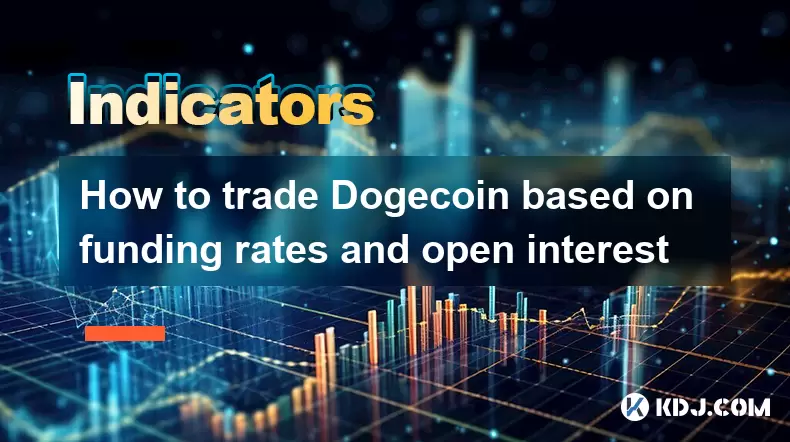
How to trade Dogecoin based on funding rates and open interest
Jul 07,2025 at 02:49am
Understanding Funding Rates in Dogecoin TradingFunding rates are periodic payments made to either long or short traders depending on the prevailing market conditions. In perpetual futures contracts, these rates help align the price of the contract with the spot price of Dogecoin (DOGE). When funding rates are positive, it indicates that long positions p...
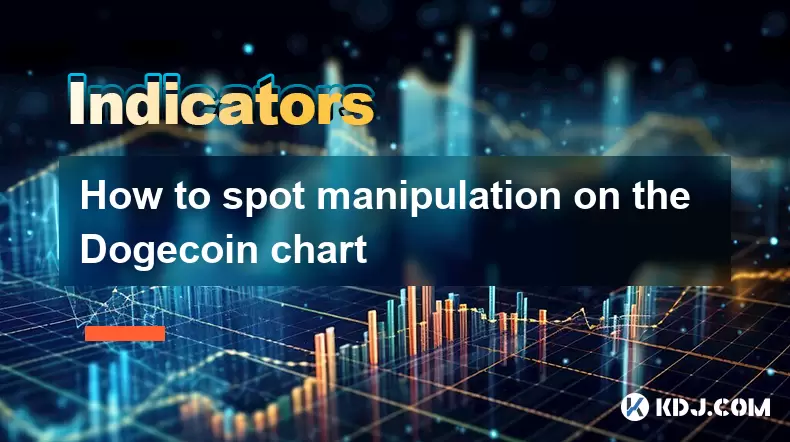
How to spot manipulation on the Dogecoin chart
Jul 06,2025 at 12:35pm
Understanding the Basics of Chart ManipulationChart manipulation in the cryptocurrency space, particularly with Dogecoin, refers to artificial price movements caused by coordinated trading activities rather than genuine market demand. These manipulations are often executed by large holders (commonly known as whales) or organized groups aiming to mislead...
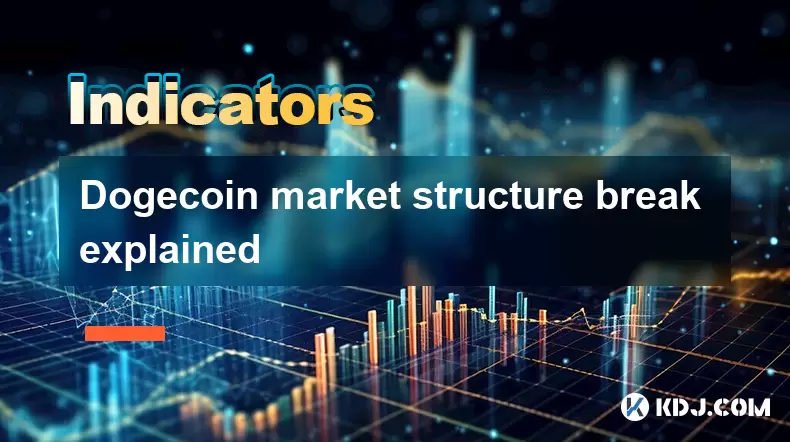
Bitcoincoin market structure break explained
Jul 07,2025 at 02:51am
Understanding the Dogecoin Market StructureDogecoin, initially created as a meme-based cryptocurrency, has evolved into a significant player in the crypto market. Its market structure refers to how price action is organized over time, including support and resistance levels, trend lines, and patterns that help traders anticipate future movements. A mark...
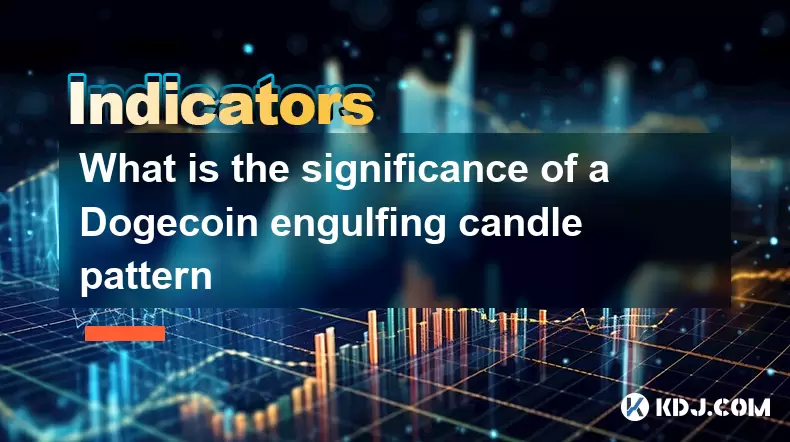
What is the significance of a Dogecoin engulfing candle pattern
Jul 06,2025 at 06:36am
Understanding the Engulfing Candle Pattern in CryptocurrencyThe engulfing candle pattern is a significant technical analysis tool used by traders to identify potential trend reversals in financial markets, including cryptocurrencies like Dogecoin. This pattern typically consists of two candles: the first one is relatively small and indicates the current...
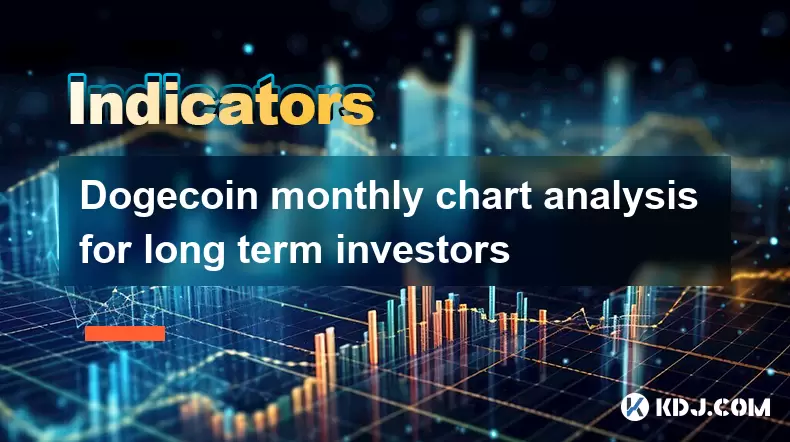
Dogecoin monthly chart analysis for long term investors
Jul 06,2025 at 10:08am
Understanding the Dogecoin Monthly ChartFor long-term investors, analyzing the monthly chart of Dogecoin (DOGE) provides a macro view of its price behavior over extended periods. The monthly chart captures major trends, key resistance and support levels, and potential reversal zones that are crucial for strategic investment planning. Unlike daily or hou...
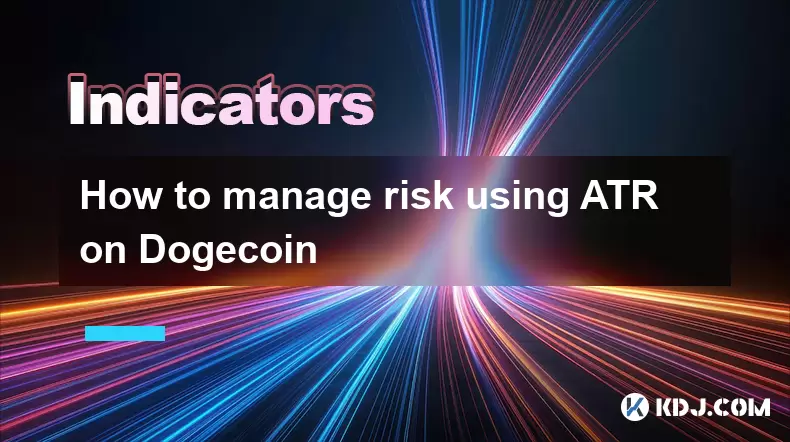
How to manage risk using ATR on Dogecoin
Jul 06,2025 at 02:35am
Understanding ATR in Cryptocurrency TradingThe Average True Range (ATR) is a technical indicator used to measure market volatility. Originally developed for commodities, it has found widespread use in cryptocurrency trading due to the high volatility inherent in digital assets like Dogecoin (DOGE). The ATR calculates the average range of price movement ...

How to trade Dogecoin based on funding rates and open interest
Jul 07,2025 at 02:49am
Understanding Funding Rates in Dogecoin TradingFunding rates are periodic payments made to either long or short traders depending on the prevailing market conditions. In perpetual futures contracts, these rates help align the price of the contract with the spot price of Dogecoin (DOGE). When funding rates are positive, it indicates that long positions p...

How to spot manipulation on the Dogecoin chart
Jul 06,2025 at 12:35pm
Understanding the Basics of Chart ManipulationChart manipulation in the cryptocurrency space, particularly with Dogecoin, refers to artificial price movements caused by coordinated trading activities rather than genuine market demand. These manipulations are often executed by large holders (commonly known as whales) or organized groups aiming to mislead...

Bitcoincoin market structure break explained
Jul 07,2025 at 02:51am
Understanding the Dogecoin Market StructureDogecoin, initially created as a meme-based cryptocurrency, has evolved into a significant player in the crypto market. Its market structure refers to how price action is organized over time, including support and resistance levels, trend lines, and patterns that help traders anticipate future movements. A mark...

What is the significance of a Dogecoin engulfing candle pattern
Jul 06,2025 at 06:36am
Understanding the Engulfing Candle Pattern in CryptocurrencyThe engulfing candle pattern is a significant technical analysis tool used by traders to identify potential trend reversals in financial markets, including cryptocurrencies like Dogecoin. This pattern typically consists of two candles: the first one is relatively small and indicates the current...

Dogecoin monthly chart analysis for long term investors
Jul 06,2025 at 10:08am
Understanding the Dogecoin Monthly ChartFor long-term investors, analyzing the monthly chart of Dogecoin (DOGE) provides a macro view of its price behavior over extended periods. The monthly chart captures major trends, key resistance and support levels, and potential reversal zones that are crucial for strategic investment planning. Unlike daily or hou...

How to manage risk using ATR on Dogecoin
Jul 06,2025 at 02:35am
Understanding ATR in Cryptocurrency TradingThe Average True Range (ATR) is a technical indicator used to measure market volatility. Originally developed for commodities, it has found widespread use in cryptocurrency trading due to the high volatility inherent in digital assets like Dogecoin (DOGE). The ATR calculates the average range of price movement ...
See all articles























